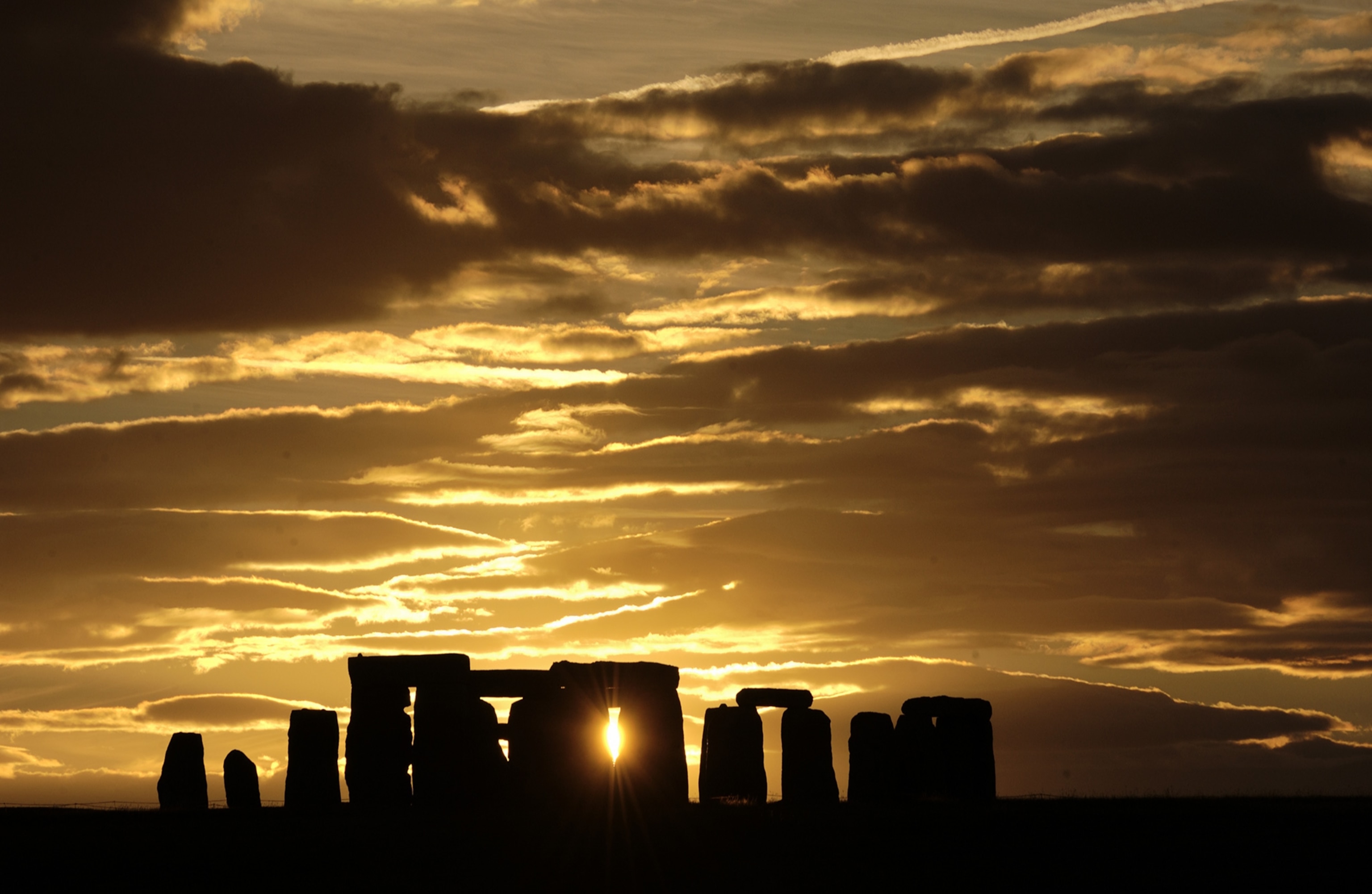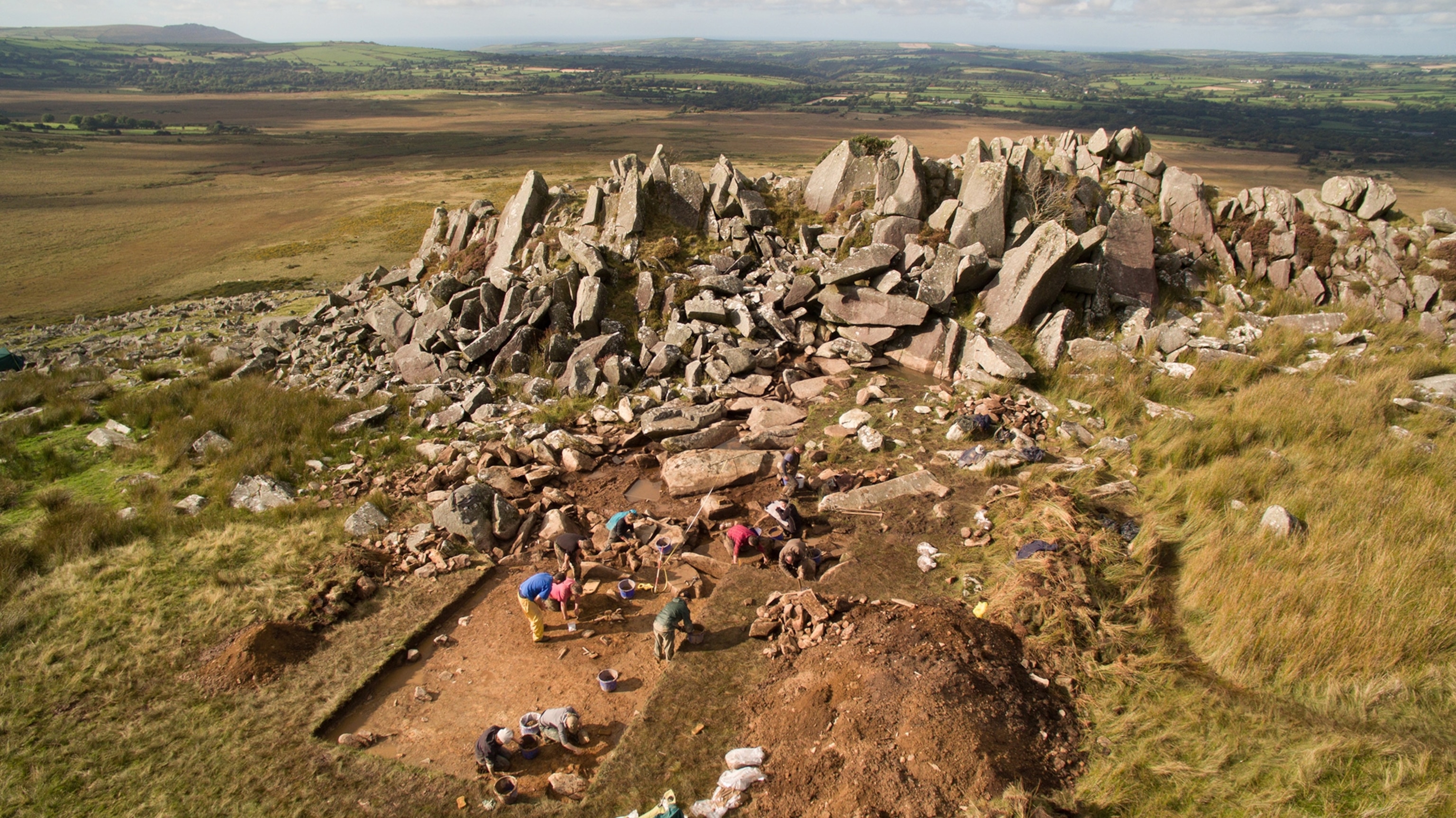
Specific Stonehenge quarries identified by new research
Two ancient quarries some 180 miles from the famed prehistoric monument have been identified as the source for stones in the monument’s inner circle.
Findings from a team of British archaeologists, announced this week in the journal Antiquity, shed light on how some of Stonehenge’s monoliths were extracted and transported.
In an announcement Monday, the team said it found extensive evidence of Neolithic stone quarrying at two sites in Wales that supplied the distinctive ‘bluestones’ erected at Stonehenge around 5,000 years ago. Forty-three bluestones survive out of an estimated 80 that once stood at Stonehenge; they form an inner horseshoe at the site, surrounded by the outer circle of much larger giant sandstone monoliths. By dating and studying artifacts from the quarries, the archaeologists have determined when and how prehistoric people first extracted these bluestones.
The Welsh quarries are located in the Preseli hills in north Pembrokeshire, roughly 180 miles (290 km) from Stonehenge by land. The bluestones weigh 1-2 tons and are up to 8 feet tall.
(Read about the Scottish ruins that predate Stonehenge.)
The stones are volcanic and igneous rocks with precise geological signatures that match the inner horseshoe of smaller rocks at Stonehenge. Geologists have shown that this region of Wales is the only part of the British Isles that contains a particular type of rock—spotted dolerite—common in the bluestones.
Archaeologists have uncovered stone tools, dirt ramps and platforms, burnt charcoal and chestnuts, and an ancient sunken road that was likely the exit route from the quarry.
“While we knew the locations where the rocks originated, the really exciting thing was to find actual quarries,” says Michael Parker Pearson, director of the project and a professor at University College London. “They built extensive facilities here: platforms, ramps, a loading bay. You can see chisel marks where they drove in wooden wedges at the recesses on the outcrop.”
Radiocarbon dates from charcoal and burned hazelnuts at prehistoric campfires show Neolithic activity at the quarries between 5,400 and 5,200 years ago. Researchers believe that Stonehenge was not built before 5000 BC. This raises a puzzling question: where were the stones during those 400 years?
(Read about recently revealed hidden monuments under Stonehenge.)
“It’s intriguing,” Parker Pearson says, “and while it could’ve taken those Neolithic stone-draggers nearly 500 years to get them to Stonehenge, that’s pretty improbable. It’s more likely that the stones were first used in a local monument somewhere near the quarries that was then dismantled and dragged off to Wiltshire.”
Moving Two-Ton Monoliths
Naturally forming rock pillars at the quarry sites made things somewhat easier for the prehistoric workers. “They only had to insert wooden wedges into the cracks between the pillars and then let the Welsh rain do the rest by swelling the wood to ease each pillar off the rock face,” says Dr. Josh Pollard of the University of Southampton. “The quarry-workers then lowered the thin pillars onto platforms of earth and stone, a sort of ‘loading bay’ from where the huge stones could be dragged away along trackways leading out of each quarry.”

(Read about the ancient British monument was 10 times bigger than Stonehenge.)
Eighty of the bluestone monoliths were eventually transported to Stonehenge. Moving two-ton monoliths across nearly 200 miles of countryside is an extraordinary undertaking, but examples from India show that stones this size can be carried on wooden lattices by groups as small as 60 people.
Removing the stones from the quarries required a combination of strength and ingenuity. The narrow width of the exit pathway—only 6 feet (1.8 m) across— is too small to accommodate the use of wooden rollers. Archaeologists believe that workers used a combination of ropes, levers, and a fulcrum to position the stones on top of wooden sledges that were carried or slid downhill. “You need two teams,” says Parker Pearson, “one on the top with a rope taking the strain and lowering it slowly and another, standing roughly 3 feet lower, ready to receive it.”
Though the workers at the site likely ate a diet of mostly meat, no bones or antlers have survived because of the area’s highly acidic soil. What does survive is evidence of snacks on roasted chestnuts, a staple of the Neolithic diet. Parker Pearson thinks that a group of at least 25 workers did the quarrying, probably walking to the site each day from nearby settlements.
The research of Parker Pearson and his team was supported by a grant from the National Geographic Society.





